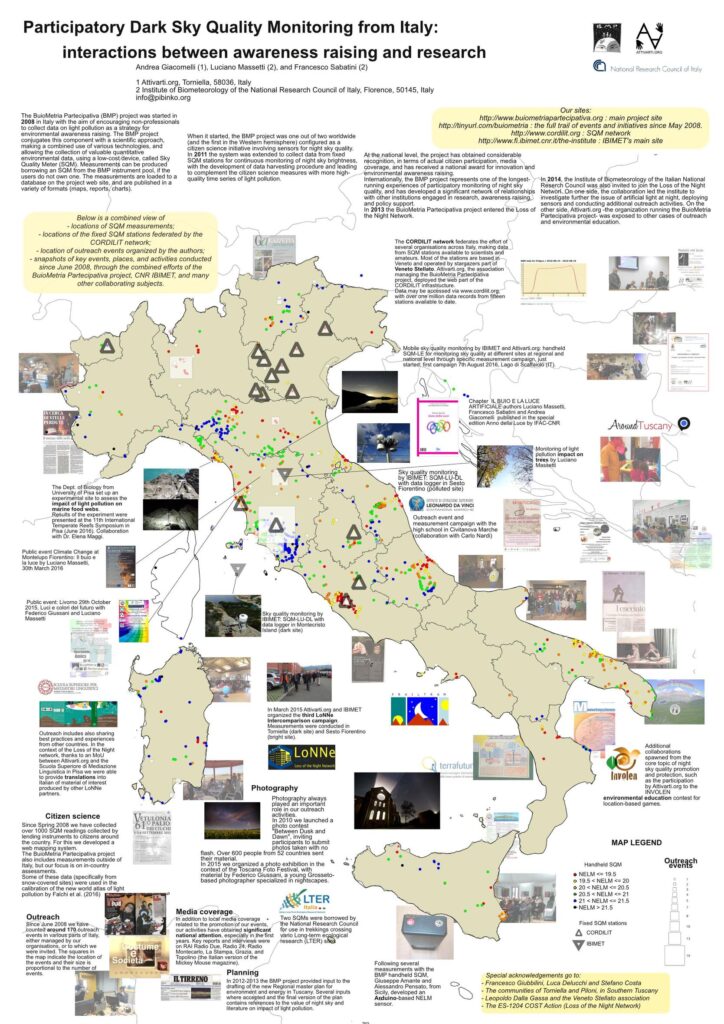[TO BE TRANSLATED]
Musica, fotografia, open data, monitoraggio del cielo notturno e pici all’aglione: tutto insieme senza fare indigestione.
Se avete fretta, saltate direttamente alla pagina del Festival d’inverno in Val di Farma. Altrimenti, mettete un po’ di sottofondo soft, e procedete:
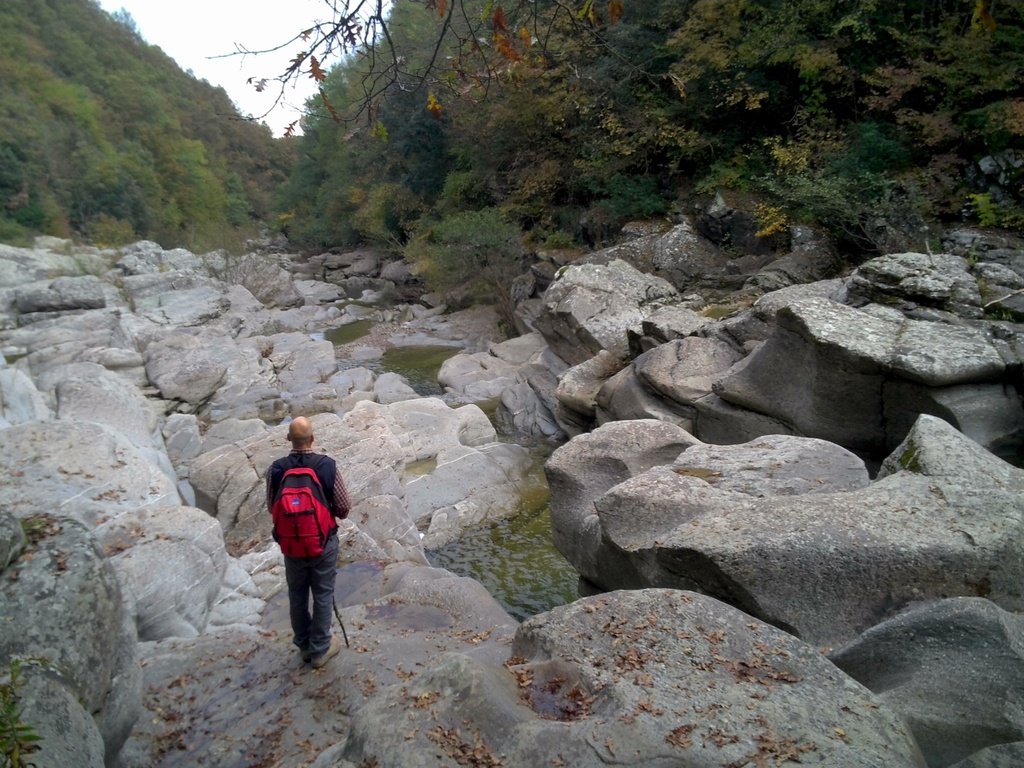
Dal 17 al 19 dicembre 2016 la bassa Toscana ospita un evento forse non inedito, ma senz’altro particolare. Proponiamo un festival d’inverno nella periferia di un territorio che d’inverno offre molto meno che d’estate, quando il turismo stimola nei dintorni una programmazione culturale sempre notevole, ma a volte con sovrapposizioni che alla fine danno un eccesso opposto rispetto alle altre stagioni.
Vi aspettiamo in Val di Farma, a metà strada fra Siena e Grosseto o -come diciamo agli stranieri- some 100 km South of Florence, ripensata in un momento di primavera 2015 anche come “la valle che non c’è“.
Il Festival d’inverno in Val di Farma proporrà
- cinque momenti di musica dal vivo
- una serata di fotografia
- presentazioni di carattere culturale e scientifico.
…senza trascurare la necessaria componente enogastronomica, che va anche un po’ da sé, date le cose bòne che si mangiano e bevono da queste parti.
La manifestazione si svolge in una graduale transizione dalla valle e Grosseto.
I primi due giorni saranno centrati prevalentemente sulla parte rurale della storia, mentre lunedì le attività si sposteranno sul capoluogo maremmano, con alcune stazioni intermedie lungo il percorso (in via di definizione).
La musica
Sabato 17 dopo cena si esibiranno gli Officina e i Regars da Chiusdino (SI), già nota per ospitare nei paraggi il Mulino Bianco di barilliana memoria. Sono due cover band di varie fasce di età che apriranno le danze con successi dagli anni ’60 in qua.
Domenica 18 la questione si fa più composita. Ad aprire le performance, alle 18 il rientro sulle scene di Pietro Crivelli, alias Peter Seeds. Già nella prima formazione degli Whisky Trail, Peter è poi uscito dal gruppo per un giro del mondo durato 40 anni e che lo ha portato dal 2011 a stabilirsi a Piloni. Il clou della giornata sono gli Etruschi from Lakota, da Montecastelli Pisano, in Val di Cecina. 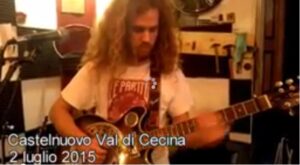 L’indicazione geografica tipica non deve indurre in localismi: gli Etruschi suonano in tutto il centro-nord Italia -senza timore di andare al Sud non appena ne avranno l’opportunità- e stanno ultimando la produzione del loro terzo album. Con riferimenti musicali che vanno da Rino Gaetano ai Led Zeppelin, cantano testi in italiano che hanno a che fare con questioni di identità rurale, fuga dei cervelli, contadini magri. E lo fanno in modo non cupo e non didascalico…oserei dire nemmeno tanto “indie”…insomma sono così come li sentite…un po’ etruschi e un po’ from Lakota.
L’indicazione geografica tipica non deve indurre in localismi: gli Etruschi suonano in tutto il centro-nord Italia -senza timore di andare al Sud non appena ne avranno l’opportunità- e stanno ultimando la produzione del loro terzo album. Con riferimenti musicali che vanno da Rino Gaetano ai Led Zeppelin, cantano testi in italiano che hanno a che fare con questioni di identità rurale, fuga dei cervelli, contadini magri. E lo fanno in modo non cupo e non didascalico…oserei dire nemmeno tanto “indie”…insomma sono così come li sentite…un po’ etruschi e un po’ from Lakota.
Una parte della band si tratterrà poi a Torniella per una sorta di “buongiorno” di lunedì 19 (il programma di questa parte del festival è in via di definizione).
Oltre alla musica suonata, c’è la “musica che gira intorno”: la maggior parte degli eventi si svolgeranno nello stabile della Filarmonica di Torniella, inaugurato nel 1912, e dove tuttora la banda del paese (di oltre 30 elementi, di cui almeno 25 residenti) si esercita tra un’esibizione e l’altra. Nel corso delle giornate sarà quindi possibile visitare gli archivi della Filarmonica, che contengono strumenti, spartiti, locandine di vecchie manifestazioni, fotografie dagli anni ’20 in poi e alte testimonianze.
Cultura popolare, scienza, tecnologia e ambiente
Nel corso del festival questi elementi si fondono. Prima con due presentazioni che si terranno dalle ore 21 di domenica 18: verrà anzittutto presentata la prima versione della “mappa di comunità” della Val di Farma, in cui capocaccia e cercatori di funghi hanno integrato sin dagli inizi del 2015 le basi cartografiche ufficiali della Regione Toscana con punti di interesse a loro noti (sorgenti, antichi orti, rifugi di guerra, per citarne alcuni).
Nella stessa occasione si farà il punto del progetto di BuioMetria Partecipativa, nato in Val di Farma nel 2008 e poi diffuso su scala nazionale e con varie collaborazioni internazionali, e si affideranno alcuni sensori (i buiometri) a cittadini che nel corso del 2017 svolgeranno misure di inquinamento luminoso in varie parti d’Italia.
Si darà poi un’anteprima della programmazione 2017 delle associazioni che animano il festival (Attivarti.org e la Filarmonica di Torniella anzitutto, senza trascurare le altre realtà sul territorio) della stima delle risorse necessarie per realizzare il programma previsto, e del come sostenere queste attività.
Nella coda grossetana di lunedì 19, il testimone passa a Maurizio Bacci, ospite dell’associazione fotografica Riflessi di Grosseto. Questo evento è spiegato nel dettaglio in un precedente articolo.
Mangiare, bere, uomo, donna
Vado a memoria, per cui mi scuseranno i non nominati, che avrò piacere di inserire nel censimento se me lo fanno sapere. Nella parte centrale della valle -circa 400 residenti su 120 km quadrati- si trovano due trattorie, un agriturismo dove si può mangiare e dormire, un B&B, un affittacamere, un castello con sette appartamenti-vacanza, un bar-tabacchi- merenderia, due negozi di alimentari, una parrucchiera, una fioraia, un negozio di caccia e pesca, un carrozziere, cinque idraulici, tre falegnami, svariati artigiani-manutentori-muratori, una cava di Caolino con annesso resort, una ditta di legnami, un negozio di elettrodomestici, un fornaio, un negozio di vendita e riparazione di utensili per agricoltura e silvicoltura, una ditta di lavorazioni meccaniche di precisione, un produttore di salumi, un geometra, un avvocato, tre circoli ricreativi, una squadra di calcio, tre squadre di caccia, una pro loco, un ufficio postale e una parrocchia.
Insomma: non è un distretto industriale emiliano, ma qualcosa c’è, oltre ai canaloni, i funghi e i cinghiali, che sono in genere i tre motivi per cui chi non è parente dei residenti arriva in Valle.

Concentrandosi sulla parte di servizi che potrebbero servire di più durante il festival: per mangiare o pernottare consigliamo di preiscriversi (gratuitamente) all’evento.
Un progetto pro loco, ma a che pro e per quale loco?

L’idea del festival nasce dalla congiuntura di alcune situazioni portate avanti da associazioni e imprenditori di base nei tre borghi di Torniella, Piloni e Scalvaia e alcuni elementi “di fòri” ma abbastanza radicati nel territorio. Salta fuori che tutti hanno un’esperienza pluriennale nell’organizzazione di eventi su scale diverse, dal locale (sagre, tornei, cene, concerti, campionati di calcio non professionistico) al nazionale-o-sopra (Il Tirreno, Cronaca Vera, Comcast Sports News, Radio 24, e altri).
Sommando questi elementi, per quanto sembri strano ad alcuni, il Festival non ha una valenza strettamente “pro Val di Farma”. Tanto per cominciare, si svolge in due posti, dato che una parte importante della manifestazione sarà a Grosseto. In secondo luogo, le problematiche con cui ci confrontiamo e le opportunità che si offrono, e che ci hanno portato a organizzare il Festival, sono le stesse di qualsiasi gruppo di borghi delle Colline Metallifere, della Toscana e senz’altro di molte altre zone rurali.
Semplicemente, la Val di Farma è il posto dal quale siamo riusciti a sviluppare alcuni progetti, che sono stati proposti anche altrove a partire dal 2005 ma per ora non si sono sviluppati. Ci farebbe molto piacere replicare le nostre esperienze in altri siti, e viceversa, nel percorso svolto nei dieci anni da cui si sono avviate molte delle storie che hanno portato al festival abbiamo visto quali sono i punti su cui abbiamo bisogno di una mano da altri territori.
Per finire la puntata di oggi
Chi vorrà, verrà e si iscriva. Chi non potrà ma vorrebbe, ce lo faccia sapere: questo è anche il primo (almeno a conoscenza del gruppo organizzatore) festival cui si può non partecipare in modo attivo.
In ogni caso, potete seguire la playlist che ci sta accompagnando nella preparazione del festival -così come in momenti precedenti di questo percorso- ché la musica di mattina non ha mai fatto male a nessuno.
Per informazioni: info@pibinko.org
p.s. La grande assente nel festival
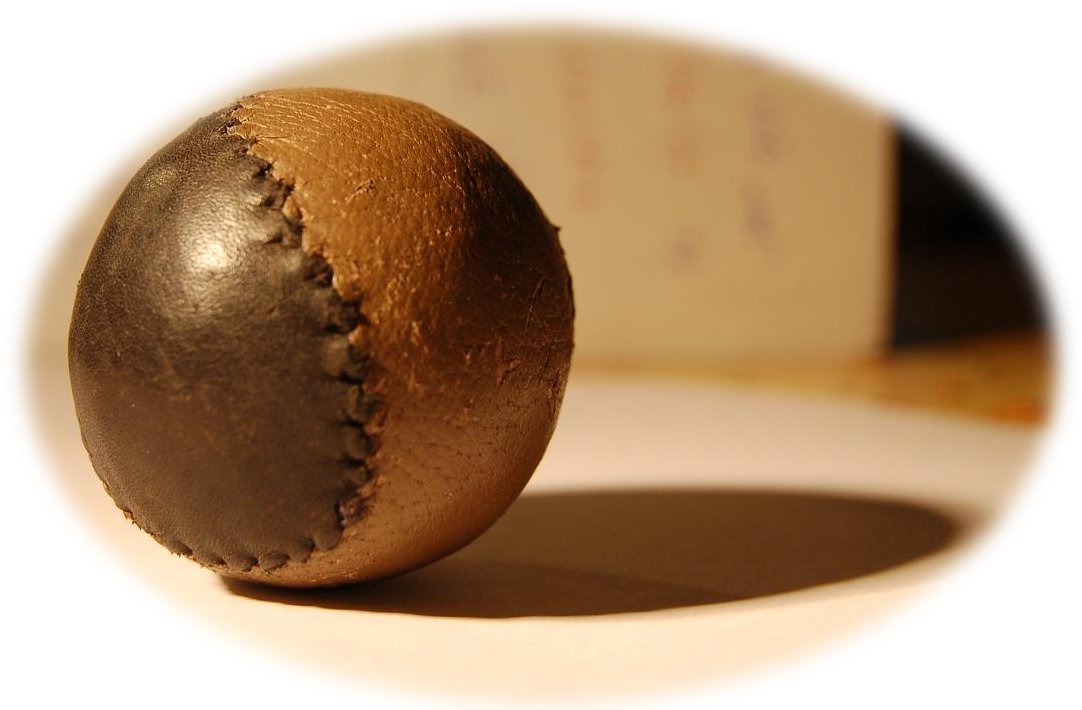 E’ la palla a 21 o palla eh!. Ma ora fa freddo, e non si gioca…tempo al tempo e spazio allo spazio…intanto ci si gode la musica.
E’ la palla a 21 o palla eh!. Ma ora fa freddo, e non si gioca…tempo al tempo e spazio allo spazio…intanto ci si gode la musica.
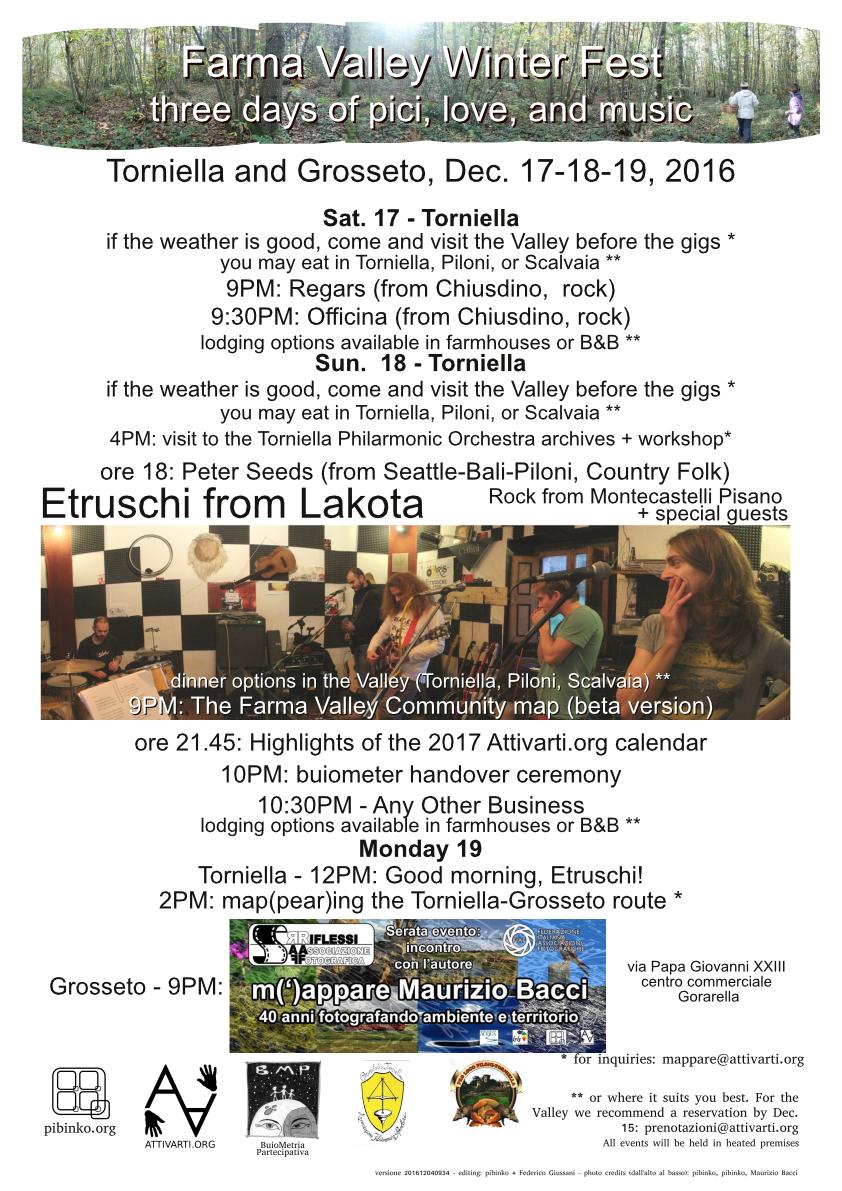
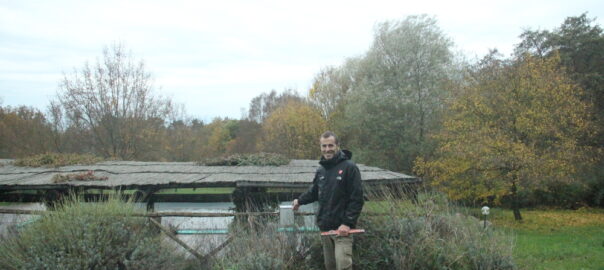



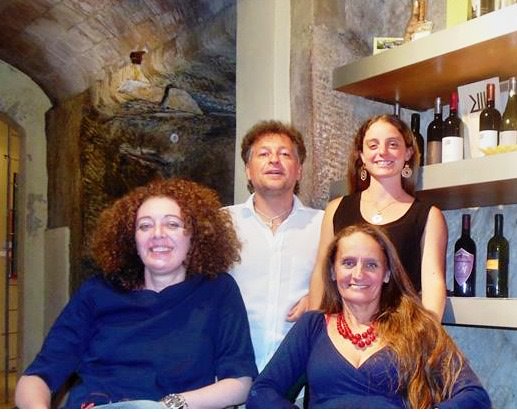
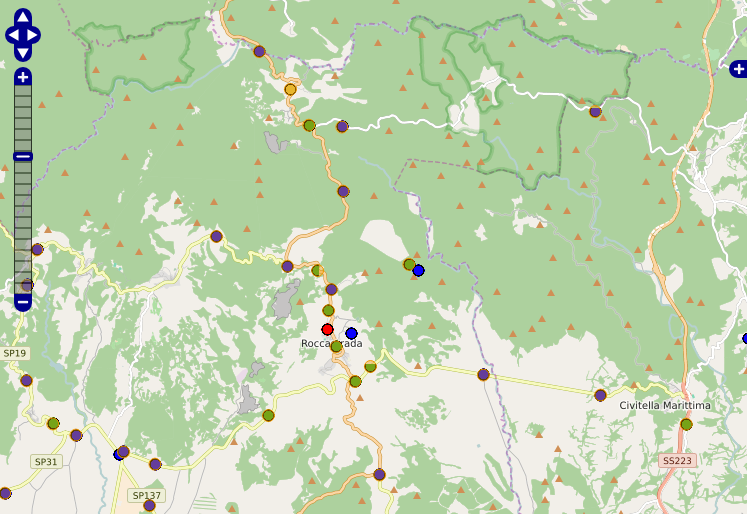
 Artificial night lighting is gaining attention as a new type of pollution; however, studies of its impacts are scarce. Fireflies provide good models to investigate its effects on nocturnal wildlife, since they depend on their bioluminescence for reproduction. This study investigated the impact of artificial illumination on firefly activity at the new campus of the Federal University of São Carlos (Sorocaba, Brazil). The flashing activity of different firefly species, especially
Artificial night lighting is gaining attention as a new type of pollution; however, studies of its impacts are scarce. Fireflies provide good models to investigate its effects on nocturnal wildlife, since they depend on their bioluminescence for reproduction. This study investigated the impact of artificial illumination on firefly activity at the new campus of the Federal University of São Carlos (Sorocaba, Brazil). The flashing activity of different firefly species, especially

